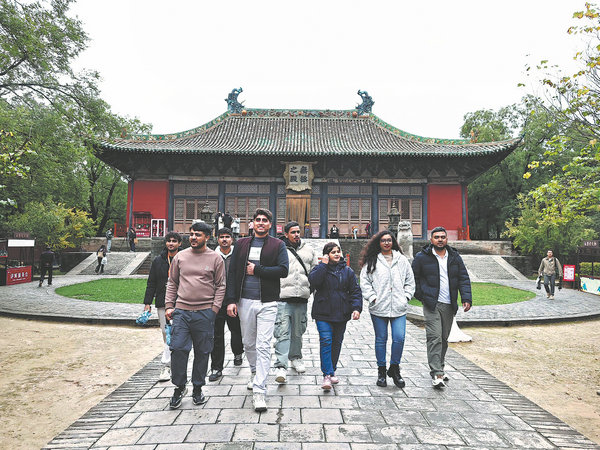

"Shanxi is a veritable treasury of China's ancient architecture. The province has more than 28,000 surviving ancient buildings — about 10.6 percent of the national total — and an estimated 82.48 percent of the country's wooden structures dating to the Yuan Dynasty (1271-1368) and earlier," according to Wang Xiaolong, deputy director of the Shanxi Institute for the Protection of Ancient Architecture and Painted Sculptures and Murals.
The journey started at Jinci Museum in Taiyuan. Situated in the southwest of Taiyuan, Jinci combines ancient Chinese architecture, sculptures, frescoes and inscriptions, representing a rich tapestry of religion, politics and family clans.
It was first built in the Northern Wei Dynasty (386-534) in memory of Shuyu, a prince of the Zhou Dynasty (c. 11th century-256 BC), at the site of his fiefdom's capital for his commitment to improving local people's livelihoods.
On this 4-hectare site, there are 98 buildings from the Song (960-1279), Yuan, Ming (1368-1644) and Qing (1644-1911) dynasties, more than 100 statues and 122 ancient trees, including 29 trees that are more than 1,000 years old.
"Stepping into Jinci Temple in Taiyuan felt like traveling back 1,000 years," said French blogger Mathieu Mylene.
"Jinci is truly magnificent, with many original ancient buildings and carvings preserved. Encircled by millennia-old trees, the whole complex transports you to a bygone era," she added.